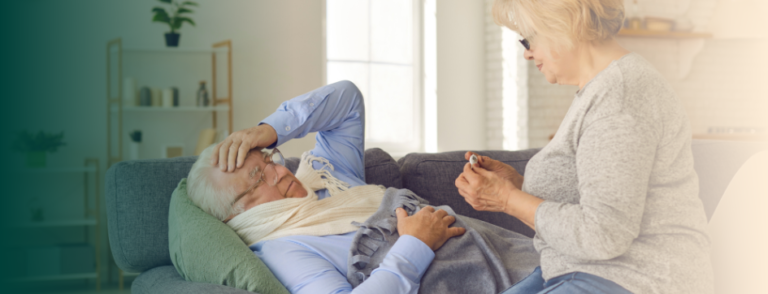It is not always easy to communicate with older people. The mere fact of aging causes our physical, cognitive and psychological abilities to deteriorate, as well as the way we relate to others. That is why, if we have difficulties understanding a family member, it is advisable to learn a series of communication techniques with older people in order to be able to understand them and guarantee their emotional well-being.
How should you communicate with an elderly person?
In order to communicate with older people we must take into consideration a series of issues. Keep in mind that hearing loss, vision problems or memory problems can make it more difficult for them to understand or remember information. Even more so if the person has dementia or Alzheimer’s. We must also consider differences in the life experiences and education of older people, as this can influence the way they communicate and how they interpret information.
We also cannot forget the “technological gap” that exists among many older people who do not master technology, mobile phones or social networks, which can distance them from the most common modes of communication with younger people.
All these circumstances influence and deteriorate communication with older people. Fortunately, with patience, empathy and good communication techniques, we can continue to understand each other with our elders so that they do not feel alone and continue to participate in the daily affairs of family life.
Best communication techniques with older people
To communicate with an elderly person we must above all be very patient and give them time to express their thoughts. Respect is also essential, therefore, we must recognize their feelings, their experience and their wisdom.
It is also interesting that you take into account different communication techniques with older people that can be very useful:
- Speak clearly and at a slow pace. Use clear language and avoid speaking too quickly. Give the older person time to process the information and respond.
- Active listening. Active listening is an essential issue in communicating with older people. That is, we must pay attention to what the person is telling us and show interest in their stories and experiences.
- Encourage their active participation. Encourage the older person to actively participate in the conversation. To do this, you can ask questions and, in this way, demonstrate your interest, thus encouraging deeper communication.
- Be empathetic and respectful. Try to understand how they feel, what their emotions are, and take into consideration their ideas, their experiences, their education, etc.
- Adapt language and communication style. Adjust your language according to the person’s ability to understand. It is advisable that you use a communication style that aligns with their preferences and comforts, trying to use sentences with simple and precise structures to avoid confusing them.
- Use eye contact. When talking to the elderly person, do not forget to also maintain eye contact to transmit empathy and allow an emotional connection. Also make sure you are in a well-lit location to facilitate visual communication.
- Avoid being condescending. Treat the elderly person as an equal, avoiding condescending tones and trying to recognize and respect their autonomy.
- Offers technological support. If you see it appropriate and the older person is open to technology, offer help so that they can handle those electronic devices that can facilitate communication.
- Stimulates memory. Ask about memories and past experiences to stimulate memory and foster emotional connection.
- Propose topics that you like. If you don’t know how to start a conversation with an older person, we recommend some topics that may be interesting to them, such as: personal and professional experiences, talking about family or their hobbies and pastimes, as well as trips or historical events experienced.
How to use non-verbal communication with older people
Nonverbal communication plays a fundamental role in interacting with older people, as it helps us transmit messages and emotions effectively, even when language skills may be limited. This is especially important in older people who have hearing problems or language difficulties or in especially noisy environments, as non-verbal communication can help compensate for these limitations.
Gestures and expressions can clarify or emphasize the meaning of words, especially if there are difficulties understanding verbal language. Thus, friendly gestures and open postures can transmit empathy and closeness, helping to establish a stronger emotional connection.
Nonverbal communication can also help stimulate memory. To do this, you can use visual stimuli, such as photographs or objects, which can help you remember events or people.
And, of course, don’t forget how important a caress, a smile or a hug is, as they can convey affection and tranquility to the elderly person.
Remember that one of the main problems that older people face is loneliness, and we can partly combat it through communication. That is why we must try to follow these communication techniques with older people that the entire NAMI team also puts into practice in our different centers, in order to take care of the psychological and emotional health of our elders.
In addition, in our Day Centers and Residences we offer countless possibilities for seniors to socialize and talk with other seniors while sharing recreational activities, something that is very important, especially if the person lives alone or if the caregiver works outside the home. However, at NAMI we advise that the connection with family and friends always remain present and that communication with the elderly person be frequent, in order to maintain their quality of life and guarantee active aging and happy.






